Indoor Artichoke Gardening might sound like a whimsical dream, conjured up by a gardener with a touch of the eccentric, but trust me, it’s more achievable than you think! Forget those sprawling fields of Tuscany; we’re bringing the artichoke adventure indoors.
Artichokes, with their architectural beauty and delectable hearts, have been prized since Roman times. Imagine, emperors feasting on these thorny delicacies! While traditionally grown in warmer climates, the desire to cultivate these beauties year-round, regardless of location, has sparked a surge in innovative indoor artichoke gardening techniques.
But why bother with the indoor route? Well, perhaps you live in a region with harsh winters, or maybe you simply lack the outdoor space. Maybe you just want the bragging rights of harvesting your own artichokes in your living room! Whatever your reason, this DIY guide is your passport to success. We’ll explore simple yet effective hacks to mimic the ideal growing conditions, from lighting to soil composition.
Think of the satisfaction of plucking a perfectly formed artichoke, grown with your own two hands, right from your indoor garden. No more relying on grocery store produce – you’ll have fresh, flavorful artichokes whenever the craving strikes. So, grab your gardening gloves, and let’s embark on this exciting journey together! I’m excited to show you how easy it is.
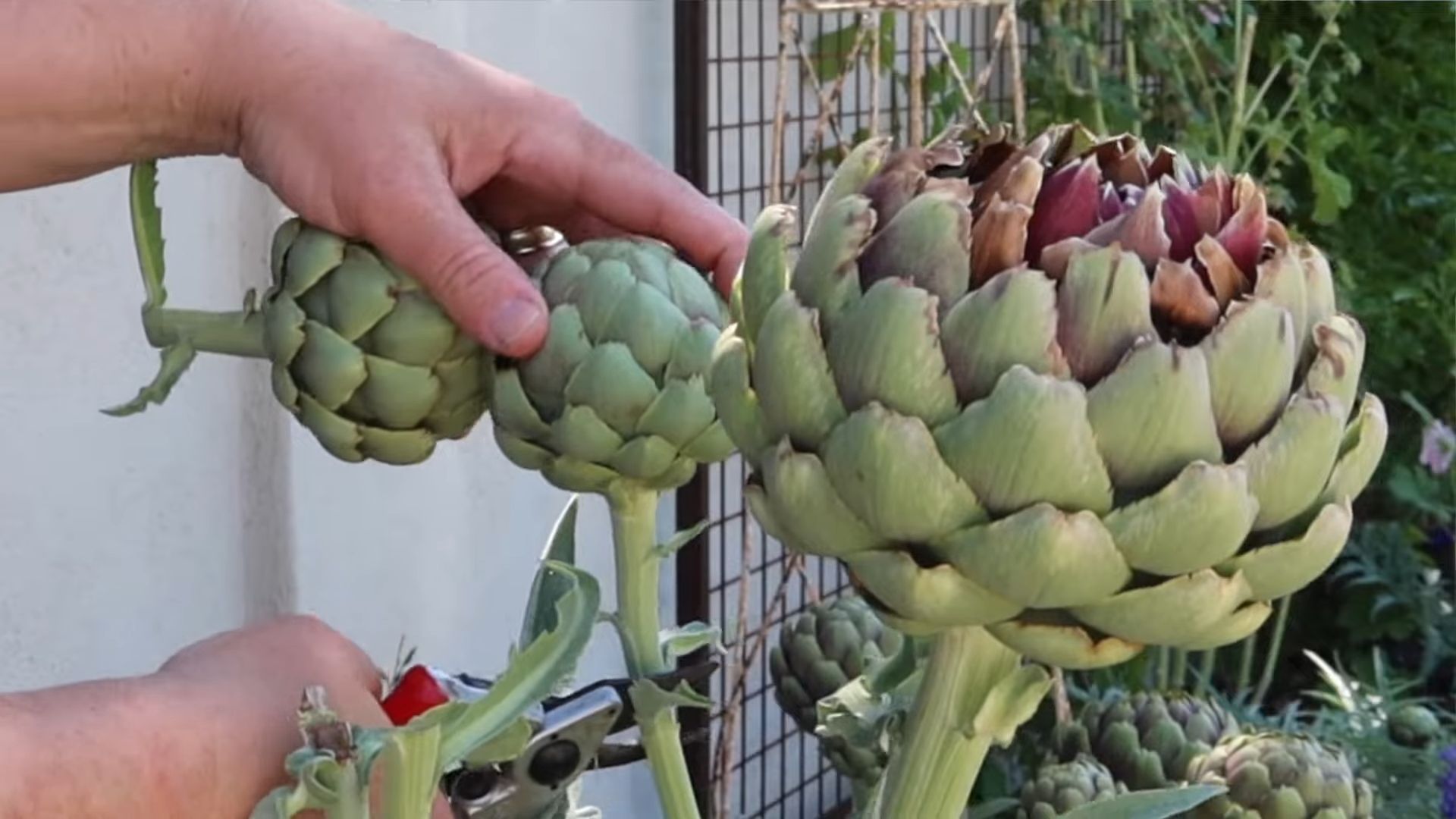
Growing Artichokes Indoors: A Step-by-Step Guide
Hey there, fellow plant enthusiasts! Ever thought about growing artichokes indoors? It might sound a bit ambitious, but trust me, it’s totally doable and incredibly rewarding. Imagine harvesting your own delicious artichokes right from your living room! I’m going to walk you through everything you need to know to make it happen.
Choosing the Right Artichoke Variety
First things first, not all artichoke varieties are created equal when it comes to indoor growing. You’ll want to pick one that’s compact and well-suited for container gardening. Here are a few of my favorites:
* ‘Tempo’: This variety is known for its early and abundant yields, even in smaller spaces. It’s a great choice for beginners.
* ‘Green Globe’: A classic artichoke with a mild flavor. While it can get a bit larger, with proper pruning, it can thrive indoors.
* ‘Violetta’: If you’re looking for something a little different, ‘Violetta’ produces beautiful purple artichokes. It’s also relatively compact.
Gathering Your Supplies
Before we dive into the planting process, let’s make sure you have everything you need. Here’s a checklist:
* Artichoke Seeds or Seedlings: You can start from seed or purchase a young plant from a nursery. Starting from seed takes longer, but it’s more budget-friendly.
* Large Container: Artichokes need plenty of room to grow. Choose a pot that’s at least 24 inches in diameter and 18 inches deep. Make sure it has drainage holes!
* High-Quality Potting Mix: Use a well-draining potting mix specifically formulated for vegetables. Avoid using garden soil, as it can compact and suffocate the roots.
* Grow Lights: Artichokes need at least 6-8 hours of direct sunlight per day. If you don’t have a sunny window, invest in a good set of grow lights.
* Fertilizer: A balanced, slow-release fertilizer will provide your artichoke plant with the nutrients it needs to thrive.
* Watering Can or Hose: For watering your plant.
* Pruning Shears: For trimming and harvesting.
* Optional: A humidity tray to increase humidity around the plant.
Planting Your Artichoke
Okay, let’s get our hands dirty! Here’s how to plant your artichoke, whether you’re starting from seed or using a seedling:
Starting from Seed
1. Start Seeds Indoors (8-10 Weeks Before Last Frost): Fill small pots or seed trays with seed-starting mix. Sow the seeds about 1/2 inch deep and water gently.
2. Provide Warmth and Light: Keep the soil consistently moist and provide warmth (around 70-75°F). Use a heat mat if needed. Place the seedlings under grow lights or in a sunny window once they emerge.
3. Thin Seedlings: Once the seedlings have a few sets of true leaves, thin them out, leaving only the strongest seedling in each pot.
4. Harden Off Seedlings: Before transplanting the seedlings into their final container, you’ll need to harden them off. This means gradually exposing them to outdoor conditions over a period of 1-2 weeks. Start by placing them outside for a few hours each day, gradually increasing the amount of time they spend outdoors.
Planting a Seedling
1. Prepare the Container: Fill the large container with potting mix, leaving a few inches of space at the top.
2. Dig a Hole: Dig a hole in the center of the container that’s large enough to accommodate the root ball of the seedling.
3. Gently Remove the Seedling: Carefully remove the seedling from its nursery pot, being careful not to damage the roots.
4. Place the Seedling in the Hole: Place the seedling in the hole and backfill with potting mix. Gently firm the soil around the base of the plant.
5. Water Thoroughly: Water the plant thoroughly until water drains out of the drainage holes.
Caring for Your Indoor Artichoke
Now that your artichoke is planted, it’s time to provide it with the care it needs to thrive.
Watering
Artichokes need consistent moisture, but they don’t like to sit in soggy soil. Water deeply whenever the top inch of soil feels dry to the touch. Avoid overwatering, as this can lead to root rot.
Lighting
As I mentioned earlier, artichokes need at least 6-8 hours of direct sunlight per day. If you don’t have a sunny window, use grow lights to supplement the natural light. Position the grow lights about 6-12 inches above the plant.
Fertilizing
Feed your artichoke plant with a balanced, slow-release fertilizer every 2-3 months. You can also supplement with a liquid fertilizer every few weeks during the growing season. Follow the instructions on the fertilizer label for proper application rates.
Pruning
Pruning is essential for maintaining the shape and health of your artichoke plant. Remove any dead or yellowing leaves regularly. You can also prune back the plant to encourage bushier growth.
Pest Control
Keep an eye out for common pests like aphids, spider mites, and whiteflies. If you spot any pests, treat them with insecticidal soap or neem oil.
Pollination
Artichokes are typically pollinated by insects, but since you’re growing them indoors, you’ll need to hand-pollinate them. Use a small paintbrush to transfer pollen from one flower to another. Gently brush the pollen from the stamen (the male part of the flower) onto the pistil (the female part of the flower).
Harvesting Your Artichokes
The moment you’ve been waiting for! Harvesting your own homegrown artichokes is incredibly satisfying.
1. When to Harvest: Artichokes are ready to harvest when the buds are plump and firm, and the scales are still tightly closed. The size of the artichoke will vary depending on the variety, but generally, you’ll want to harvest them when they’re about 3-4 inches in diameter.
2. How to Harvest: Use pruning shears to cut the artichoke stem about 2-3 inches below the bud.
3. Enjoy Your Harvest: Artichokes are delicious steamed, grilled, or baked. You can also use them in dips, salads, and other dishes.
Troubleshooting
Even with the best care, you might encounter some challenges along the way. Here are a few common problems and how to address them:
* Yellowing Leaves: This could be a sign of overwatering, underwatering, or nutrient deficiency. Adjust your watering schedule and fertilize the plant if needed.
* Lack of Buds: This could be due to insufficient light, improper fertilization, or lack of pollination. Make sure your plant is getting enough light, fertilize it regularly, and hand-pollinate the flowers.
* Pest Infestation: Treat pests with insecticidal soap or neem oil.
Overwintering Your Artichoke
Artichokes are perennials, which means they can live for several years. To overwinter your artichoke plant indoors, reduce watering and fertilizing during the dormant season (fall and winter). Keep the plant in a cool, bright location. You may need to prune it back significantly.
Additional Tips for Success
* Rotate Your Plant: Rotate your artichoke plant regularly to ensure that all sides receive equal light exposure.
* Provide Support: As the plant grows, it may need support to prevent it from toppling over. Use stakes or a tomato cage to provide support.
* Monitor Humidity: Artichokes prefer a slightly humid environment. If your indoor air is dry, use a humidifier or place the plant on a humidity tray.
* Be Patient: It can take several months for an artichoke plant to produce buds. Don’t get discouraged if you don’t see results right away. Just keep providing it with the care it needs, and eventually, you’ll be rewarded with delicious homegrown artichokes.
Growing artichokes indoors might seem like a challenge, but with a little patience and the right care, you can enjoy fresh, homegrown artichokes all year round. Happy gardening!
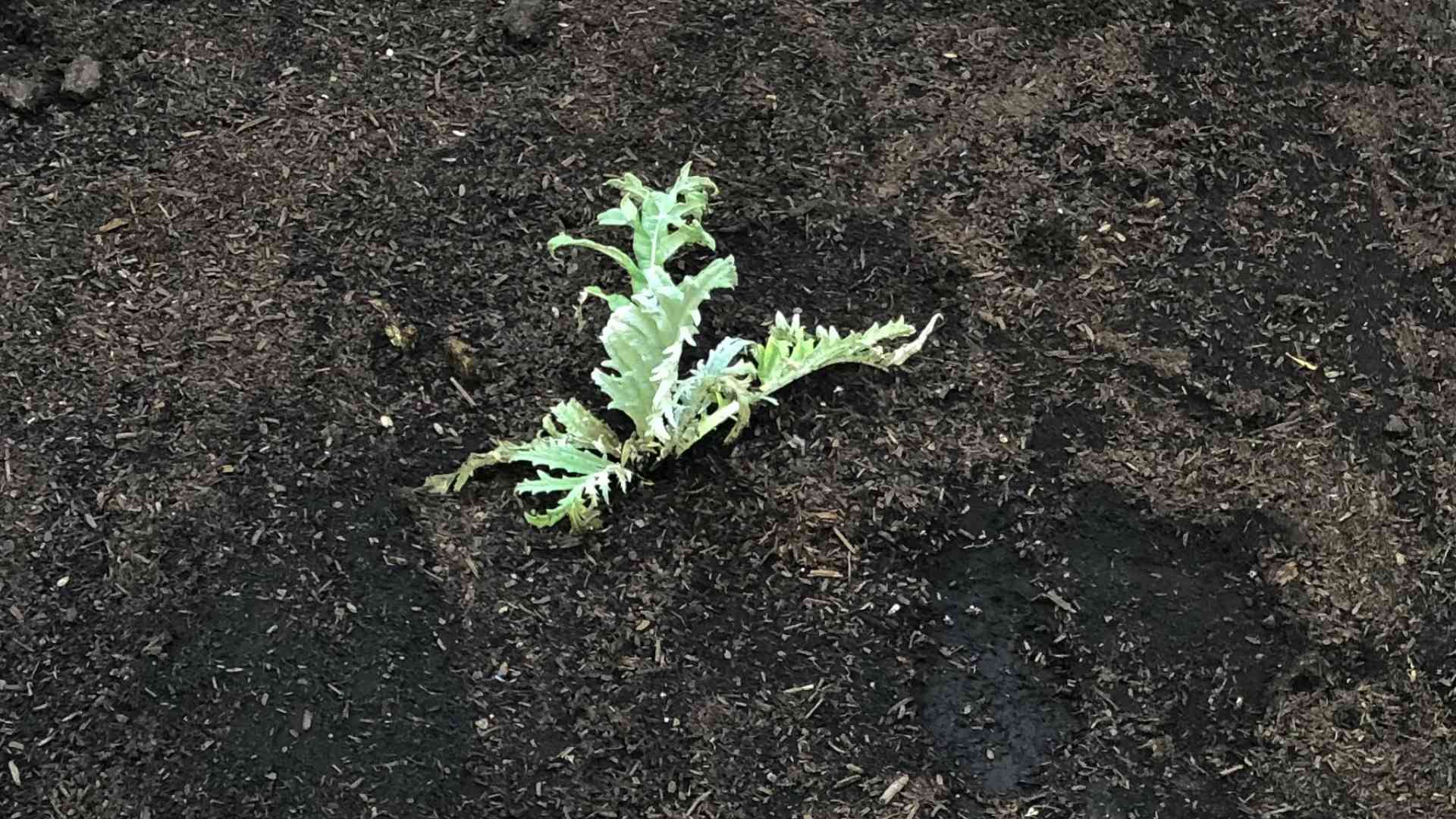
Conclusion
So, there you have it! Transforming your living space into a miniature artichoke farm might seem ambitious, but with a little patience and the right approach, cultivating your own indoor artichokes is not only achievable but incredibly rewarding. This DIY indoor artichoke gardening trick offers a unique opportunity to connect with nature, even within the confines of your home. Forget relying solely on grocery store produce; imagine the satisfaction of harvesting your own fresh, flavorful artichokes, knowing exactly where they came from and how they were grown.
This isn’t just about growing food; it’s about creating a sustainable and enriching hobby. The vibrant green foliage of the artichoke plant adds a touch of Mediterranean charm to any room, and the anticipation of those spiky, edible buds is a constant source of excitement. Plus, engaging in indoor gardening has been shown to reduce stress and improve overall well-being.
But the benefits extend beyond personal enjoyment. By embracing this DIY method, you’re also contributing to a more sustainable lifestyle. You’re reducing your carbon footprint by minimizing the transportation of produce, and you’re gaining control over the pesticides and chemicals used in your food production.
Why is this DIY trick a must-try? Because it empowers you to grow your own delicious and nutritious food, beautifies your home, and promotes a more sustainable way of living. It’s a win-win-win!
Now, let’s talk variations. While the basic method we’ve outlined provides a solid foundation, feel free to experiment and tailor it to your specific needs and preferences.
* Variety is the Spice of Life: Don’t limit yourself to just one type of artichoke. Explore different varieties, such as ‘Green Globe,’ ‘Violetta,’ or ‘Romanesco,’ to discover your favorite flavor profile.
* Hydroponic Artichokes: For a more advanced approach, consider adapting this method to a hydroponic system. This can lead to faster growth and higher yields.
* Companion Planting: Introduce companion plants like marigolds or basil to deter pests and enhance the overall health of your artichoke plants.
* Creative Containers: While a large pot is essential, don’t be afraid to get creative with your container choice. Repurposed barrels, galvanized tubs, or even woven baskets can add a unique touch to your indoor garden. Just ensure proper drainage.
We are confident that you will find this DIY indoor artichoke gardening trick to be a fun and fulfilling experience. We encourage you to give it a try and share your results with us! Post photos of your thriving artichoke plants on social media using #IndoorArtichokeGarden and tag us so we can see your progress. We’re eager to learn from your experiences and celebrate your successes. Let’s build a community of indoor artichoke enthusiasts!
FAQ
Q: What is the best time of year to start growing artichokes indoors?
A: While you can technically start artichokes indoors at any time of year, the ideal time is late winter or early spring. This allows the seedlings to get a head start before being transplanted into larger containers or, if you choose, eventually moved outdoors (depending on your climate). Starting in late winter/early spring mimics the natural growing cycle of artichokes and provides them with the optimal conditions for healthy development.
Q: How much sunlight do indoor artichokes need?
A: Artichokes are sun-loving plants and require at least 6-8 hours of direct sunlight per day. If you don’t have a south-facing window that provides sufficient sunlight, you’ll need to supplement with grow lights. LED grow lights are a great option as they are energy-efficient and provide the full spectrum of light that artichokes need to thrive. Position the grow lights a few inches above the plants and adjust as they grow.
Q: What type of soil is best for growing artichokes indoors?
A: Artichokes prefer well-draining, fertile soil with a slightly acidic to neutral pH (around 6.0-7.0). A good potting mix specifically formulated for vegetables is a great choice. You can also create your own mix by combining equal parts of potting soil, compost, and perlite or vermiculite. The compost provides essential nutrients, while the perlite or vermiculite improves drainage and aeration.
Q: How often should I water my indoor artichoke plants?
A: Water your artichoke plants regularly, keeping the soil consistently moist but not waterlogged. Check the soil moisture by sticking your finger about an inch deep. If the soil feels dry, it’s time to water. Avoid overwatering, as this can lead to root rot. During the active growing season (spring and summer), you may need to water more frequently than during the dormant season (fall and winter).
Q: How often should I fertilize my indoor artichoke plants?
A: Artichokes are heavy feeders and benefit from regular fertilization. Start fertilizing about a month after planting, using a balanced liquid fertilizer diluted to half strength. Fertilize every 2-3 weeks during the growing season. Look for a fertilizer with a higher phosphorus content to promote bud development. You can also supplement with compost tea or worm castings for added nutrients.
Q: How long does it take to harvest artichokes grown indoors?
A: It typically takes about 100-150 days from planting to harvest, but this can vary depending on the variety, growing conditions, and your climate. Be patient! The first year, you may not get a large harvest, but the plants will become more productive in subsequent years.
Q: How do I know when my artichokes are ready to harvest?
A: Artichokes are ready to harvest when the buds are plump and firm, and the scales are still tightly closed. The size of the bud will vary depending on the variety. To harvest, use a sharp knife to cut the artichoke stem about 2-3 inches below the base of the bud.
Q: What are some common pests and diseases that affect indoor artichokes?
A: Common pests that can affect indoor artichokes include aphids, spider mites, and whiteflies. Regularly inspect your plants for signs of infestation and treat promptly with insecticidal soap or neem oil. Overwatering can lead to root rot, so ensure proper drainage and avoid letting the soil stay soggy.
Q: Can I move my indoor artichoke plants outdoors?
A: Yes, you can move your indoor artichoke plants outdoors during the warmer months, but you’ll need to acclimate them gradually to avoid shocking them. Start by placing them in a sheltered location for a few hours each day, gradually increasing the amount of sunlight they receive. Bring them back indoors before the first frost.
Q: My artichoke plant is not producing buds. What could be the problem?
A: There are several reasons why your artichoke plant might not be producing buds. Insufficient sunlight is a common culprit. Make sure your plant is getting at least 6-8 hours of direct sunlight per day, or supplement with grow lights. Lack of nutrients can also be a factor. Fertilize regularly with a balanced fertilizer. Another possibility is that the plant is not mature enough. Artichokes typically don’t produce buds until their second year. Finally, some varieties require vernalization (a period of cold exposure) to induce bud formation. If you suspect this is the case, you can try exposing your plant to temperatures between 35-45°F for a few weeks.


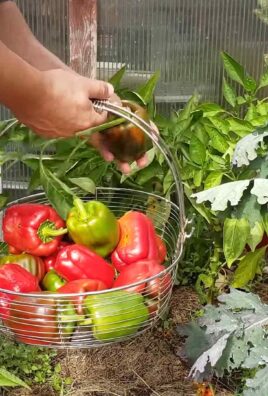
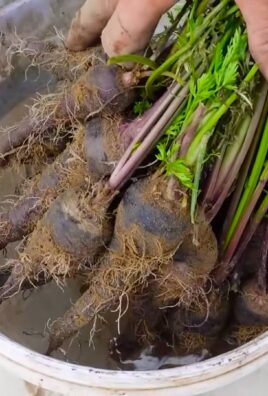
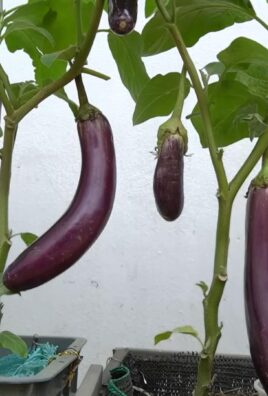
Leave a Comment